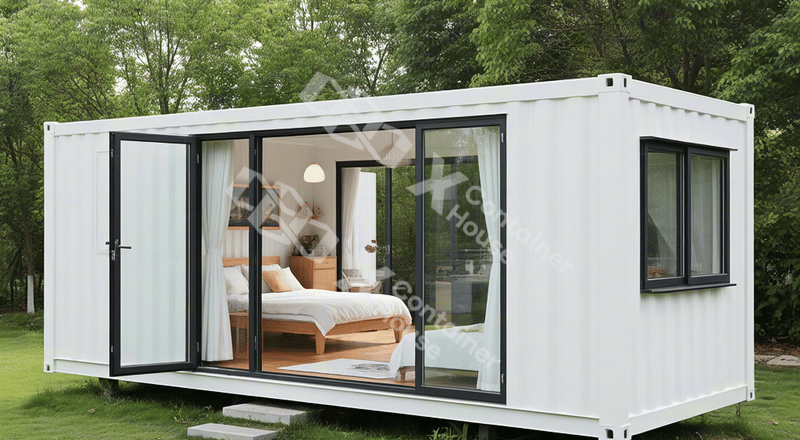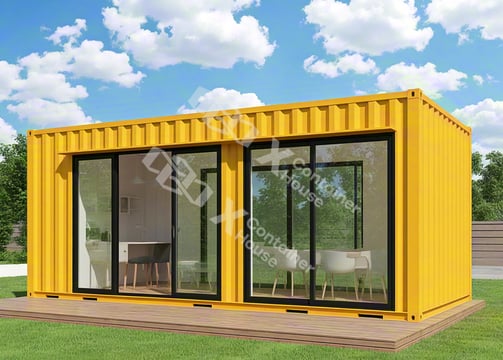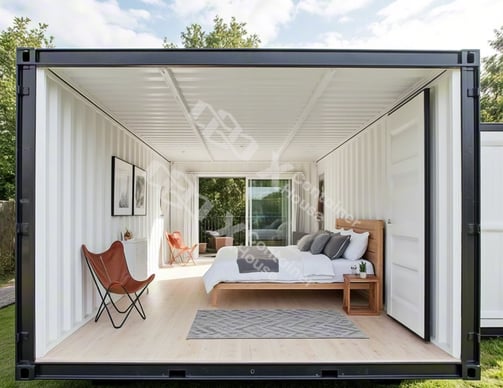Building a Flat Pack Home: A Guide to Simplicity and Efficiency
Discover if building a flat pack home is truly easy. Learn about the assembly process, potential challenges, quality concerns, customization options, and the role of professionals in constructing these affordable and pre - fabricated dwellings.
FLAT PACK HOUSE
4/8/20254 min read


In the world of modern housing solutions, flat pack homes, also known as flat pack dwellings, have been gaining traction. These homes, which come in pre - fabricated kits that can be easily assembled on - site, offer a unique blend of convenience, affordability, and customization. But the big question remains: is building a flat pack home really as easy as it sounds? Let's explore the ins and outs of this innovative housing option.
The Appeal of Flat Pack Homes
Flat pack homes have several advantages that make them an attractive choice for many homeowners. First and foremost, their pre - fabricated nature means that a significant portion of the construction work is done in a factory setting. This results in a more controlled environment, which can lead to higher - quality construction and fewer delays due to weather or other on - site issues.
Another major appeal is the cost - effectiveness. Since the homes are mass - produced in a factory, the manufacturing process is often more efficient, reducing the overall cost of the home. Additionally, the simplified assembly process can save on labor costs, making flat pack homes a more affordable option compared to traditional custom - built homes.
Flat pack homes also offer a high degree of customization. Buyers can choose from a variety of floor plans, exterior finishes, and interior features to create a home that suits their specific needs and preferences. This flexibility allows homeowners to have a unique living space without the high cost of a fully custom - built home.
The Assembly Process: How Easy Is It?
The assembly of a flat pack home is where the "easy" factor comes into play, but it's not without its challenges. Most flat pack home kits come with detailed instructions and all the necessary components, including walls, floors, roofs, and windows. For those with some basic construction skills, the assembly process can be a rewarding DIY project.
The first step in building a flat pack home is to prepare the site. This involves clearing the land, leveling the ground, and pouring a foundation if necessary. Once the site is ready, the assembly can begin. The walls are typically the first components to be put together, followed by the roof and floors.
One of the advantages of flat pack homes is that the components are designed to fit together like a puzzle. This means that with the right tools and a bit of patience, most people can assemble the basic structure of the home relatively quickly. However, there are some aspects of the assembly that may require professional help, such as electrical and plumbing installations.


Potential Challenges
While the assembly process may seem straightforward, there are some potential challenges that homeowners may face when building a flat pack dwelling. One of the main challenges is the need for specialized tools. Although many of the components can be assembled with basic hand tools, some tasks may require more advanced equipment, such as a power saw or a nail gun.
Another challenge is the learning curve associated with the assembly process. Even with detailed instructions, it can take some time to get familiar with the different components and how they fit together. This can lead to frustration and delays, especially for those who are new to construction.
Weather can also be a factor. If the assembly is being done outdoors, adverse weather conditions such as rain, wind, or extreme heat can make the process more difficult and potentially damage the components. It's important to plan the assembly during a time of year when the weather is more favorable.
Quality and Durability Concerns
Some people may have concerns about the quality and durability of flat pack homes. Since the homes are mass - produced, there is a risk that the construction may not be as solid as a traditionally built home. However, reputable flat pack home manufacturers use high - quality materials and rigorous quality control measures to ensure that their homes are built to last.
In terms of durability, flat pack homes can be just as durable as traditional homes if they are properly maintained. Regular inspections and repairs, such as fixing leaks or replacing damaged siding, can help extend the life of the home. Additionally, many flat pack homes are designed to withstand harsh weather conditions, making them a suitable option for a variety of climates.
The Role of Professionals
While it's possible to build a flat pack home as a DIY project, many homeowners choose to hire professionals to assist with the assembly. Professional contractors have the experience and expertise to handle the more complex aspects of the construction, such as electrical and plumbing work, and can ensure that the home is built to code.
Hiring professionals can also save time and reduce the risk of errors. They can work more efficiently than a DIY homeowner, especially when it comes to tasks that require specialized skills. However, it's important to choose a reputable contractor who has experience working with flat pack homes to ensure a high - quality result.


In conclusion, building a flat pack house can be a relatively easy and rewarding experience, especially for those with some basic construction skills and a willingness to learn. While there are some challenges to consider, such as the need for specialized tools and potential weather - related issues, the benefits of cost - effectiveness, customization, and a controlled construction process often outweigh the drawbacks. Whether you choose to tackle the project as a DIY endeavor or hire professionals to assist you, a flat pack home can offer a unique and affordable housing solution.
About
Contact
Support
E_mail:
info@xcontainerhouse.com
Tel:+86 536 628 1777
Fax:+86 536 628 1777
OUR POLICY
© 2025. All rights reserved.






